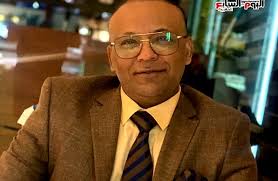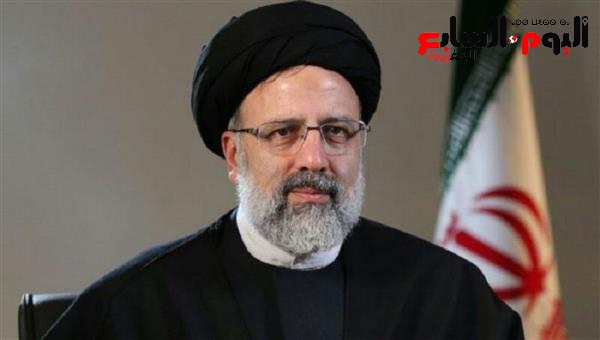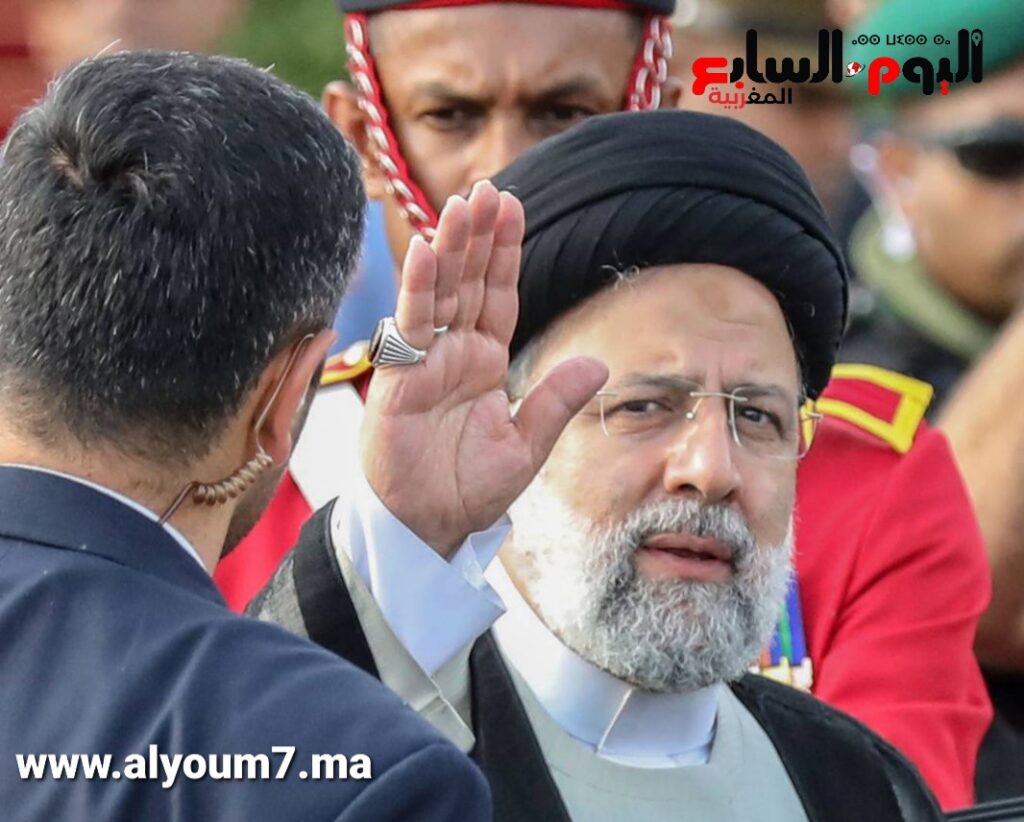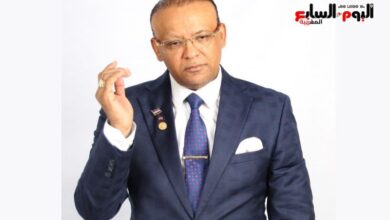Editor-in-Chief Dr. Ezzat El-Gammal writes: This is how Israel responded… Mossad in the largest assassination operation against the Iranian president and his foreign minister

.
In the beginning, the editor-in-chief of the Moroccan newspaper “Al-Youm Al-Sabea” extends his deepest condolences to the Iranian people, the axis of resistance, and specifically to the Iranian leadership and the Supreme Leader Ayatollah Ali Khamenei, on the passing of President Ebrahim Raisi and Foreign Minister Hossein Amir-Abdollahian, along with the five other martyr companions.
The incident occurred two months after Iran launched its first direct attack in history on Israel, during which it fired more than 300 ballistic and cruise missiles, and drones. This was in response to an airstrike that destroyed the Iranian consulate in Damascus on April 1st, resulting in the deaths of seven Iranian Revolutionary Guard officials, including senior commander Mohammad Reza Zahedi, the commander of those forces in Syria and Lebanon, for which Israel was accused of carrying ou.

Israel’s initial response to the unprecedented direct attack on its territory was very weak, to the extent that it can be described as a “symbolic response,” as Israel launched a drone attack on an airbase and a nuclear site near the central city of Isfahan.
The location of the incident raises suspicions about Israel’s involvement in Raisi’s death, as the Iranian president’s helicopter crashed in a mountainous forest near the border with Azerbaijan, the least friendly of Iran’s neighbors, partly due to its strong ties with Israel and its history of cooperation with Mossad. The Israeli response was that if the helicopter crash was caused by a deliberate explosion, it would be due to a very small bomb to hide any evidence, indicating that the incident was premeditated.
It is noted that the aircraft carrying the Iranian president and his accompanying team was an American-made Bell-212, produced by Bell Textron in Texas, USA, and first flew in 1968. The Bell-212 operates with two engines and can fly with one engine if the other is damaged. It can also carry 15 people, including the pilot, at the same time, with a speed of up to 190 km/h.

President Raisi was the candidate to succeed Supreme Leader Ayatollah Ali Khamenei. He was being meticulously prepared to become Iran’s next leader, a role for which he was highly qualified as a descendant of the Prophet Muhammad (peace be upon him). Raisi had an extraordinary level of experience, having held numerous positions and enjoyed the support of all Iranian institutions, including the parliamentary, constitutional, executive, and spiritual institutions. He combined all these qualities in his personality and significantly advanced Iran during his tenure. He stood up to American aggression, developed the nuclear program, and increased enrichment levels despite pressures. He also strengthened economic relations with neighboring countries by establishing an economic system that protects the country’s economic growth from American political options and increased trade with Russia and China.
His policy of pivoting eastward culminated in signing long-term strategic agreements between Tehran and both Beijing and Moscow. It also paved the way for joining economic blocs and unions at regional and international levels.
Indeed, Iran obtained full membership in the Shanghai Cooperation Organization, a bloc led by China and Russia, and was invited to join the BRICS group of emerging economies, which includes Brazil, Russia, India, China, and South Africa.
Raisi strengthened economic relations with neighboring countries by establishing an economic system that protects the country’s economic growth from American political options and increased trade with Russia and China.
Indeed, Iran obtained full membership in the Shanghai Cooperation Organization (SCO), a bloc led by China and Russia, and was invited to join the BRICS group of emerging economies, which includes Brazil, Russia, India, China, and South Africa.
Tehran views full membership in the SCO as a gateway to break Western unipolarity and balance its relations with Western countries, which have been affected by its nuclear file.
The main motivation for Iran’s accession to the SCO is the presence of the Eastern power trio (Russia, China, and India) in the organization. These countries have a high status on various political, economic, and military levels globally, which helps mitigate the effects of sanctions imposed on Iran.
The War on Gaza
Iran’s diplomatic stances, which gained media momentum recently due to its rapid activities and intensive political efforts amid the Israeli aggression on the Gaza Strip, cannot be overlooked.
With the start of the aggression on Gaza, the Iranian Foreign Minister embarked on a regional tour that included Baghdad, Beirut, Damascus, and Doha. For the first time, he spoke about the possibility of what he described as a preventive move by the “Axis of Resistance to end the Israeli genocide war on Gaza.”
Indeed, the axis moved from all its locations in Iraq, Syria, Lebanon, and Yemen according to calculated rules of engagement, providing support to the Palestinian resistance. However, despite its significance, it did not reach the level needed to deter Israel or curb its aggression on the Strip.
Unprecedented Attack on Israel
Last April, for the first time, Iran launched an unprecedented drone and missile attack on Israel with more than 300 drones and missiles. The Iranian strike came in response to Israel’s bombing of the Iranian consulate in Damascus, which resulted in the deaths of seven Revolutionary Guards members, including two high-ranking officers.
Ebrahim Raisi’s Career
Raisi, a conservative facing severe criticism regarding his human rights record, and accused by human rights groups of involvement in the execution of thousands of political prisoners in 1988, held the top judicial position in Iran before becoming president.
After the Iranian Revolution, Raisi joined the judiciary, serving in various cities while being trained by Khamenei, who later became the country’s president in 1981. Raisi began his judicial career at a young age and quickly rose through the ranks, becoming the assistant prosecutor in Tehran at just 25 years old.
He started his work in the judiciary in 1981, holding the position of prosecutor in the city of Karaj, and shortly thereafter, also became the prosecutor of Hamedan, combining both roles. In 1985, he became the deputy prosecutor of Tehran, a position that paved the way for his membership in the “Death Committee” in 1988.
The “Death Committee,” which conducted secret trials in 1988, included three other judges besides Raisi. The exact number of those executed in these trials is unknown, but human rights groups estimate that 5,000 men and women were buried in unmarked mass graves, constituting a crime against humanity.
Leaders of the Islamic Republic do not deny the executions but refrain from discussing the details of those sentences and their legality. Raisi has consistently denied any role in the executions, while defending them, stating that they were based on a fatwa issued by the then Supreme Leader, Ruhollah Khomeini.

Following the death of the first Supreme Leader, Ayatollah Khomeini, in 1989, Raisi was appointed as the prosecutor general of Tehran and remained in this position during the tenures of Mohammad Yazdi, Mahmoud Hashemi Shahroudi, and Sadeq Larijani as heads of the judiciary.
Between 2004 and 2014, Raisi served as the first deputy head of the judiciary. In 2006, he was elected as a member of the Assembly of Experts, responsible for appointing or dismissing the Supreme Leader. Two years later, he became the deputy chairman of the assembly.
Raisi rose through the ranks of the judiciary to become the prosecutor general of Tehran, and eventually the prosecutor general of Iran in 2014. He remained in this position until March 2016 when he took over the management of one of Iran’s wealthiest and most significant religious foundations, the Imam Reza Shrine Foundation, known as Astan Quds Razavi, which oversees the Imam Reza shrine in Mashhad. This position carries considerable prestige and influence, as the foundation’s budget is in the billions of dollars, owning half the land in Mashhad, Iran’s second-largest city, as well as oil and gas companies and factories.
In 2017, Raisi surprised observers by running for president against Rouhani, who won a second term with a landslide victory in the first round. However, the loss did not end Raisi’s career, as Supreme Leader Khamenei appointed him as the head of the judiciary in 2019.
In 2019, the United States imposed sanctions on Raisi, alleging his involvement in human rights violations.
Little is known about Raisi’s private life, except that his wife, Jamileh, is a professor at Shahid Beheshti University in Tehran. They have two adult daughters. His father-in-law is Ahmad Alamolhoda, a hardline Shiite cleric and preacher in Mashhad.
Since becoming president, Raisi has prioritized foreign policy and relations with neighboring countries. He has also focused on addressing the economic and social crisis primarily caused by sanctions imposed on Iran. Raisi has sought to improve Iran’s economic situation by strengthening economic relations between the Islamic Republic and neighboring countries, establishing an economic system that protects Iran’s economic growth from American political options, and enhancing trade with Russia and China.

